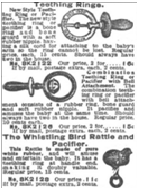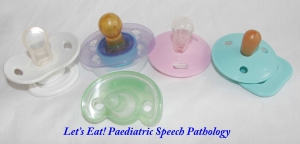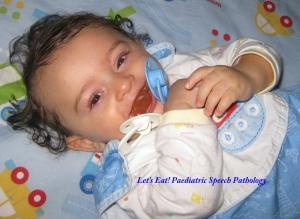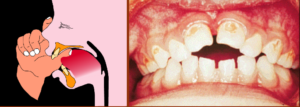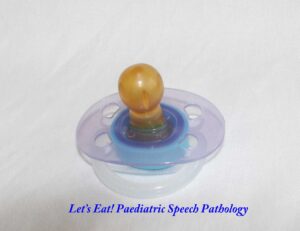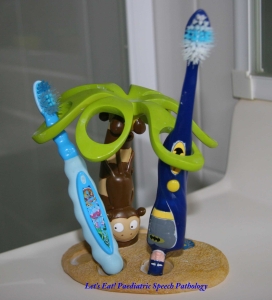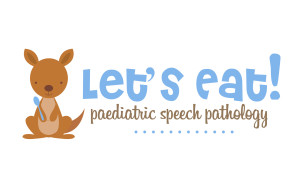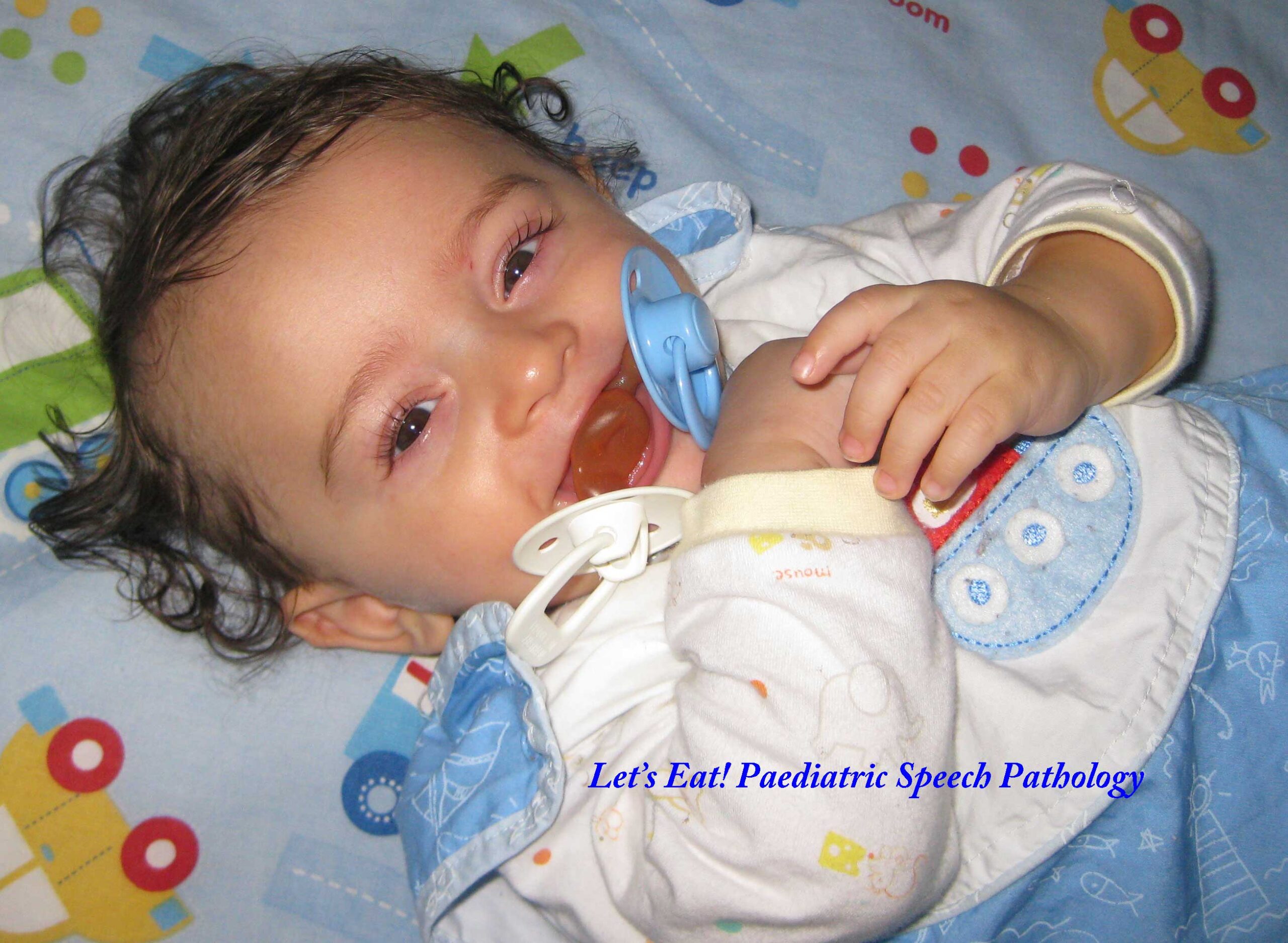
Will dummies help or hinder feeding and speech development?
I was recently chatting with some new mums about the facts and myths behind dummies. If you think about it, dummies have a long history. The first mention of them was in Germany in the 1500s but excavations of ancient burial sites show evidence of clay dummies similar to the ones we have today. In fact, in the 2nd century, doctors recommended putting honey in feeding dummy contraptions to promote the healing properties of honey. Which explains why today, we still find mothers putting honey in baby bottles and on dummies. Please don’t do this, we now know that honey can contain clostridium bacteria which in fact can cause infant botulism when babies under 12 months are given contaminated honey. As babies get older, their immune and digestive systems get better at handling these strains of bacteria.
Here’s a “teething ring” advertisement from a Sears Roebuck & Co catalogue (1)
Should I give my baby a dummy?
Well, it depends on when and why you are giving it.
- The use of dummies in preterm babies
There is research to support the use of dummies in preterm infants. Premmie babies who were bottle fed and given dummies were shown to perform better with bottle feeding and develop a more effective nutritive suck when feeding (2). The use of dummies was also found to help transition to full feeds, these babies showed less defensive behaviours during tube feeds and spent less time in fussy and active states during tube feeds (3).
Picture taken from: http://cheekychums.files.wordpress.com/2011/01/bigstockphoto_premature_1424991.jpg
- The use of dummies in term babies
If you are planning to breastfeed your baby, it is recommended that you establish breastfeeding before offering a dummy (about 4 weeks). The reasoning behind this is that sucking produces more milk so you want your baby to suck as often as he likes on your breast so your body can maximise its breastmilk production in the early weeks. Attachment and positioning is really important to establish a good suck and minimise any nipple damage so speak with a midwife or Lactation Consultatant if you need some assistance. If your baby is having difficulty with his suck- swallow and breath coordination then it might be beneficial to also speak with a Paediatric Speech Pathologist (like us at “Let’s Eat! Paediatric Speech Pathology”) who specialise in this suck-swallow coordination process.
If you are planning on bottle feeding your baby then it is up to you when you offer it. Try to pick one that looks similar to the bottle teat you are using. It is best if you don’t create a sleep association with your baby and his dummy as it might create long term sleep and settle issues (related to sleep cues) for you down the track. There is also another thought that babies who have sensory integration issues (ie constantly need to suck to calm their body systems) may need dummies to provide them with this sensory input to calm their system. From personal experience, I know that with a baby who has reflux, giving a dummy helps them to keep their milk in their stomachs and therefore reduces the risk of inflammation from constant regurgitation and vomiting.
What about the impact of dummies on speech development?
In the first 12 months, a baby is learning to use his mouth to experiment with sounds to coo and then eventually babble. The development of these babbling sequences are very important and so if you give your baby a dummy, make sure to limit its use so they have plenty of opportunities to babble.
There is a very interesting research article called “the impact of prolonged (meaning beyond 18 months) pacifier use on speech articulation’ (ref 4) that summaries the risk of dummies on speech development. Mainly long term use will distort the development of ‘s,z,sh,ch,t,d,n’ sounds eg ‘sun’ might sound like ‘thun’. This is because the dummy encourages the forward-backward movement of a baby’s tongue which results in the above sounds being pushed forward. If your baby thumb-sucks, then it is likely that their thumb sucking will have the same impact on their speech development. So again, limit the dummy use up until 12 months (and definitely by 18 months) and start implementing strategies to wean and eventually get rid of the dummy around this time.
What other effects will the dummy have?
The article mentioned above (ref 4) details the risk of increased ear infections with dummy use as well as long term dental problems. Thumb sucking and the dummy encourage an “open bite” malocclusion in infants which may require orthodontic work down the track. I spoke with a lovely Paediatric Dentist in Newcastle about dummies (and if you need a recommendation, drop me a line) who said that if a baby was seeking sucking and would reach for his thumb then she would rather they suck on a dummy because you can get rid of the dummy but you can’t with a thumb! She also recommended not letting a baby suck on a dummy over night because the impact of a dummy on dental development was related to the time the dummy was in his mouth – and overnight was therefore the longest.
Picture taken from: http://sydneychildrensdentistry.com.au/crooked-misaligned-and-crowded-teeth.html
So where does that lead you as a parent?
The bottom line? Too much of anything isn’t a good thing! If your baby is seeking the sensory comfort of a dummy, then try to limit its use. My mother calls the dummy a “shusher” – which I think is a perfect analogy, it keeps your baby quiet. Being a mum means I know firsthand that although you make know the theory; practically, you need to get through the day, sleep deprived, exhausted and emotional, the dummy may be your salvation for the first 6 months. Just try not to rely on it too much, let your baby cry (without shoving the dummy in first) so they can communicate with you that they are tired/hungry/want attention so you can learn the differences between their cries and respond to them appropriately (and nurture appropriately e.g. cuddle, massage etc.). And always have a weaning dummy plan ready so you don’t get to the stage where the dummy puts your baby to sleep or keeps them settled – you already have other strategies (like a sleep routine) to do that.
How do I wean a dummy?
- Limit the dummy use by keep it out of sight, I know that as soon as my toddler saw the dummy, he wanted it – out of sight, out of mind.
- Look at your routine and work out with your partner and any other family members when your child can have a dummy and when he can’t (but go one step further and think of other things you can do with your child to distract him when he does want it eg read him a book, go outside and play – then praise and reinforce this behaviour eg “I love playing with you outside, it’s so much fun!”).
- You have two choices when weaning – go cold turkey or reduce the amount of time on the dummy. Whatever you chose, make sure everyone is consistent and remember if you give in just once, your child will cry harder and longer expecting you to give in next time.
- A lot of parents swap the dummy for another comforter. I know we had Santa arrive a bit earlier in our house and we “posted all our dummies” to him (we had to search hard for all of them around the house) for the other babies (my son was now a “big boy”) and he “posted” a present back (another comforter) which my son was so excited to find in our mailbox. If you do this, make sure you throw out all the dummies so there is no temptation to give in when you’re tired or he is sick.
- Always encourage good dental hygiene with your child, introduce a toothbrush/washer as soon as you see a first tooth and encourage play with the toothbrush in the bath. Then add toothbrush cleaning to your sleep routine so it doesn’t get forgotten.
- I’m not a fan of cutting the dummy a bit at a time, it breaks the integrity of the dummy and my biggest concern is that once you cut it, a small bit might fall off when your baby is sucking on it and block your child’s airway. I don’t recommend this as a weaning option.
If you are struggling with weaning the dummy from your child, try developing a plan with your family, write it down, put some support in place (eg your mum might come up for the week to help out) and be consistent, even if it means waking up and night and re-settling your baby, know that each step forward you take is one step closer to weaning the dummy. This will not only help your child’s long term sleep, speech and settling strategies but dental health as well.
Good luck!
References
1. Antique pictures of dummies taken from : http://www.babybottle-museum.co.uk/dummy.htm
2. Pickler, R.A, Higgins, K.E & Crummette, B.D (1993). The Effect of Nonnutritive Sucking on Bottle-Feeding Stress in Preterm Infants. Journal of Obstetric, Gynecologic, & Neonatal Nursing, Vol22, issue 3 (230-234).
3. Pinelli, J & Symington, A. (2005). Non-nutritive sucking for promoting physiologic stability and nutrition in pre-term infants. Cochrane Database.
4. Shotts, L, McDaniel, M. & Neeley, R.A (2008). The impact of prolonged pacifier use on speech articulation: a preliminary study. Vol 35 (72-75).
This website and information on this blog post is provided for educational purposes. It is not meant or intended to replace Speech Pathology assessment and management nor medical or nutritional care for a child. It is recommended that you discuss any concerns or questions you might have with your Speech Pathologist and managing Doctor and develop an individualised team plan specifically for your child.
About the author of this blog post
Valerie is an Australian based Speech Pathologist with 10 years experience in Paediatric Feeding. She has recently opened a private practice called ‘Let’s Eat! Paediatric Speech Pathology’ that caters for Newcastle based babies and children with feeding difficulties and early intervention speech and language delays. Valerie is passionate about working in the area of paediatric feeding and special needs and has been involved in the teaching and training of Australian Speech Pathology University students and allied health professionals. You can find out more about Valerie Gent and ‘Let’s Eat! Paediatric Speech Pathology’ via her website www.letseatspeech.com.au and Facebook page www.facebook.com/LetsEatPaediatric SpeechPathology or email her on valerie.gent@letseatspeech.com.au

